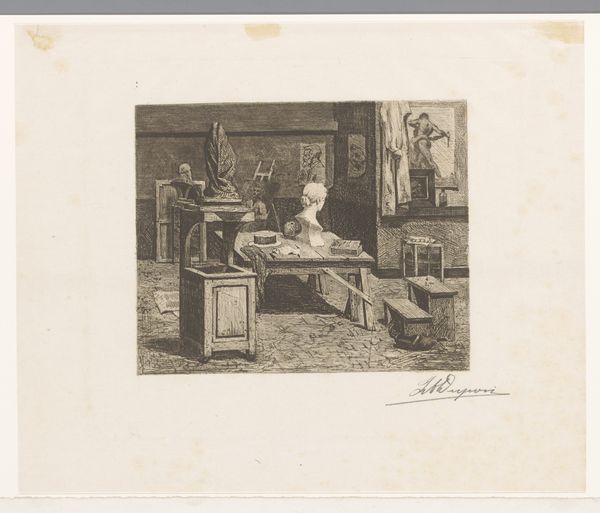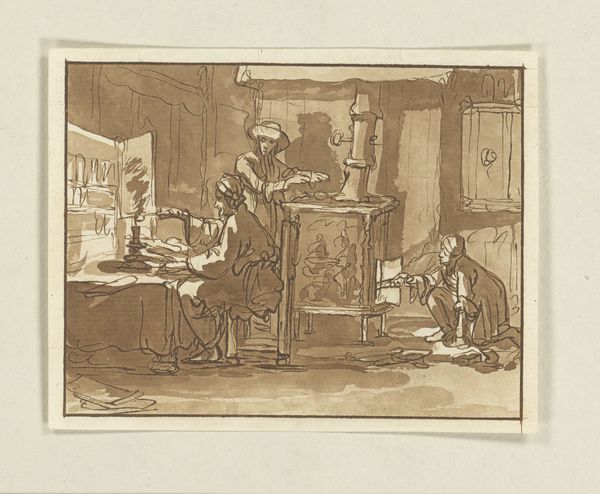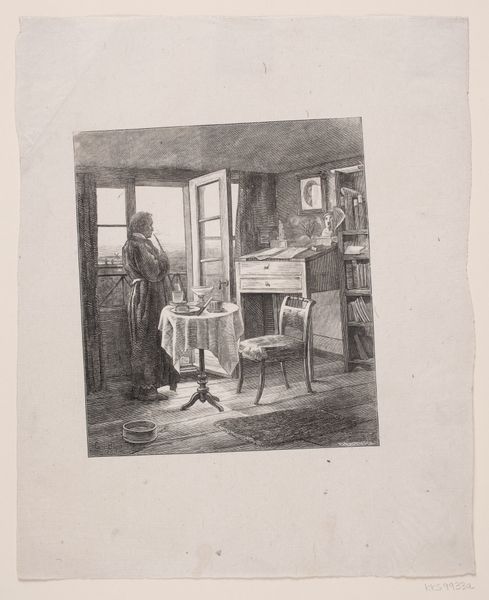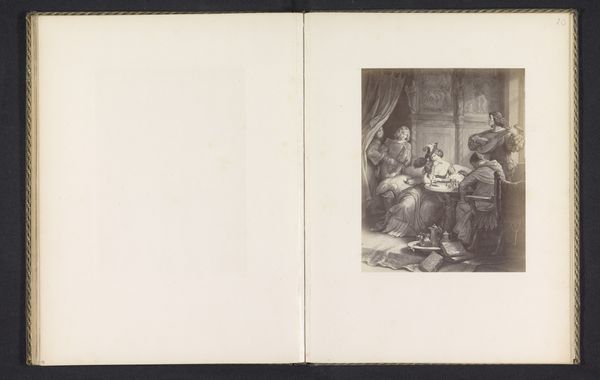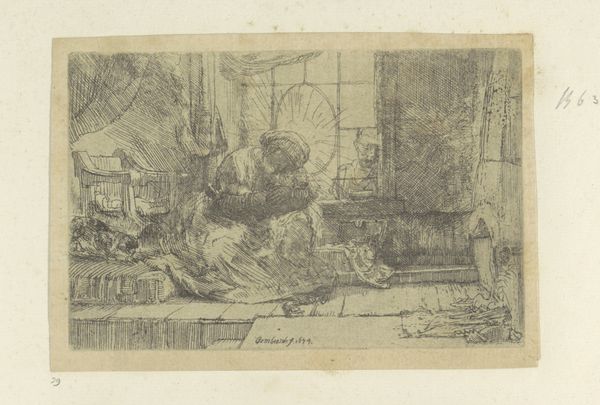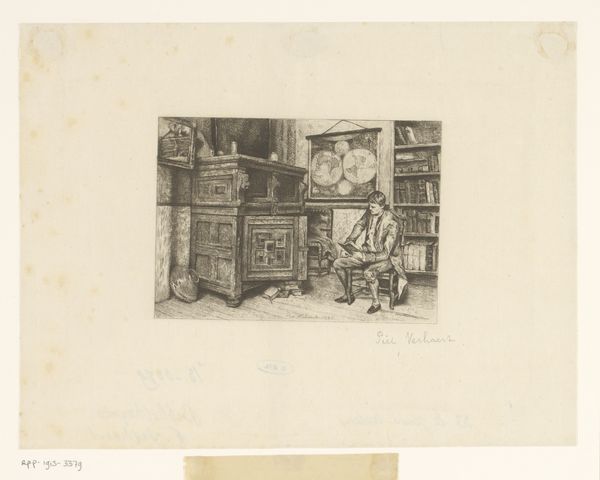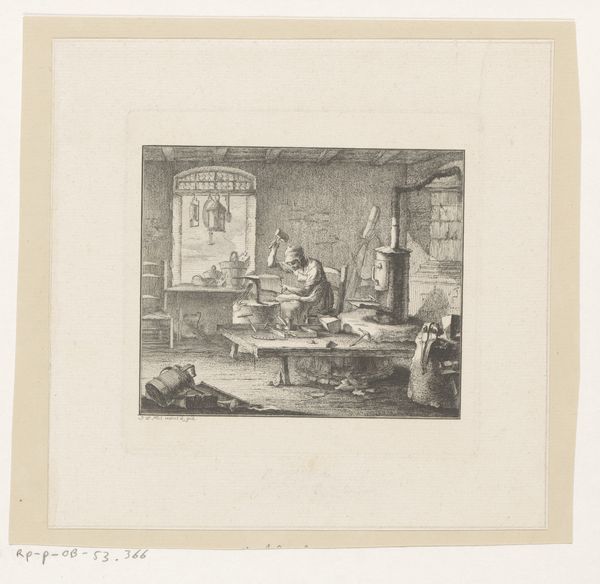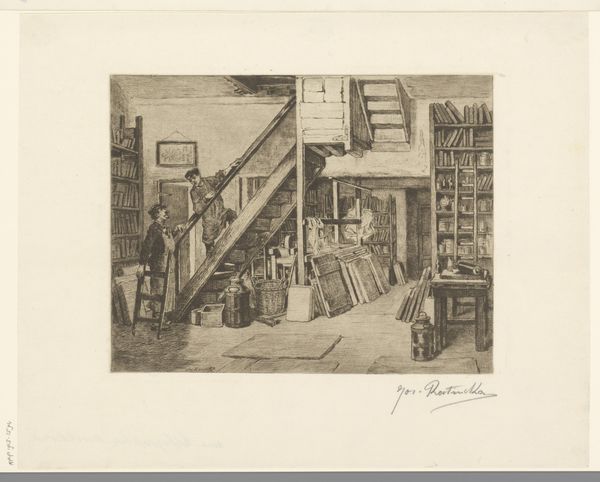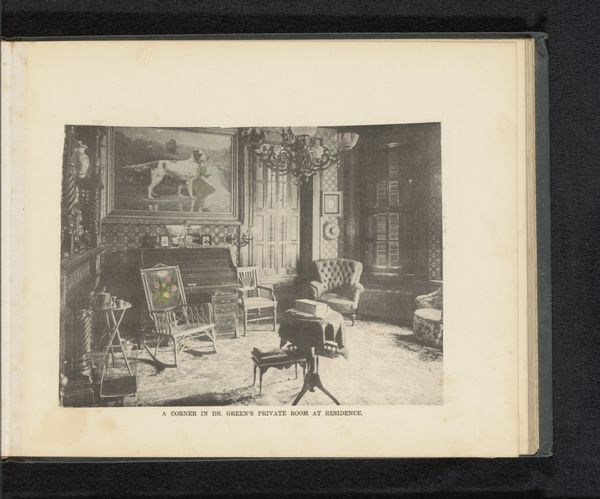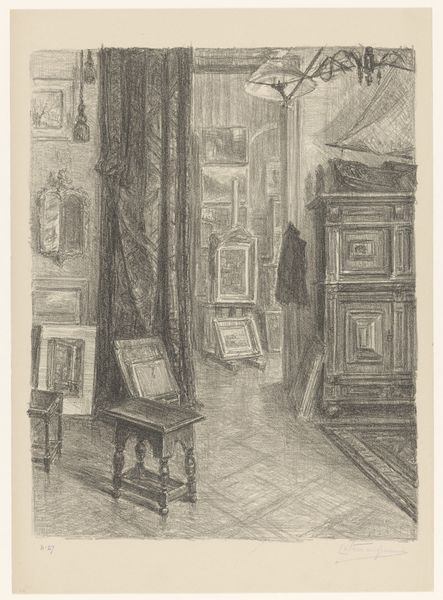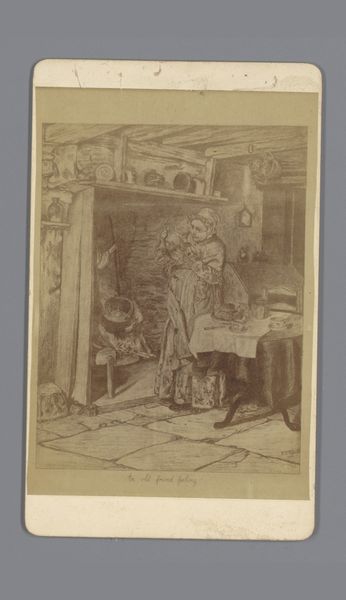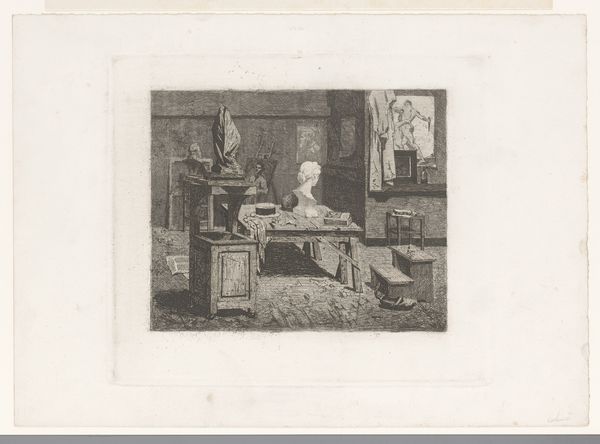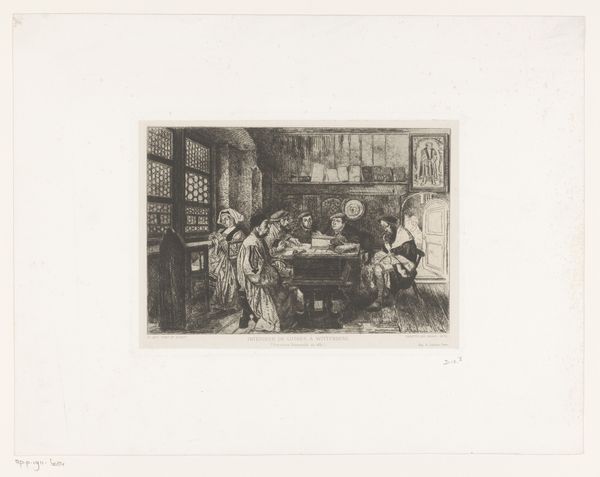
drawing, paper, ink
#
portrait
#
pencil drawn
#
drawing
#
charcoal drawing
#
paper
#
ink
#
genre-painting
Copyright: Rijks Museum: Open Domain
Curator: Welcome to the Rijksmuseum. We're standing before an intimate interior view, “Samuel Putnam Avery in his library,” attributed to Anonymous, dating from around 1870 to 1892. It’s rendered in ink and charcoal on paper. Editor: There's something quite melancholy about it. All that rich detail—the overflowing shelves, the portraits—rendered in monochrome lends a certain gravity to the scene, wouldn't you agree? Curator: It absolutely does. Samuel Putnam Avery was an important figure in the New York art world as both a dealer and a collector. Drawings like this would often have been commissioned by or given to art collectors in this period to portray their cultivated selves in their homes. The library, then as now, signals a life dedicated to learning. Editor: You get a sense of Avery's world – an intellectual sanctuary filled with personal treasures and artworks. Yet there’s a quiet solitude here; the artist captures Avery caught up in a private moment as he appears to be seated and writing, surrounded by symbols of culture. The portrait on the chair almost feels like another attendee, part of the intelligentsia and culture. Curator: The accumulation of artworks itself becomes a status symbol. The proliferation of images becomes the mark of success and cultural distinction that Avery can display to his peers. What this drawing depicts, is a visual representation of social networking, with the objects acting as tangible stand-ins for people, wealth and connections. Editor: How fascinating that you frame the artwork as a representation of societal success. The more that I view the composition, though, I see less success and more exclusion – the artwork subtly showcases the disparity between access to education and the knowledge class against those disenfranchised who have no opportunity for either. Curator: While there is undoubtedly some exclusivity present here, keep in mind the purpose of creating this picture was one of documentation and perhaps veneration, of the time. The focus then was more internal, to create a depiction of the New York elites’ taste at a very specific point. Editor: Perhaps, or perhaps we are viewing social inequality plainly shown. Ultimately, what remains is this enduring snapshot of an era and its complicated relationship to artistic patronage. Curator: Indeed. It's drawings like these that encourage us to consider the stories behind both the artist and subject in society.
Comments
No comments
Be the first to comment and join the conversation on the ultimate creative platform.
